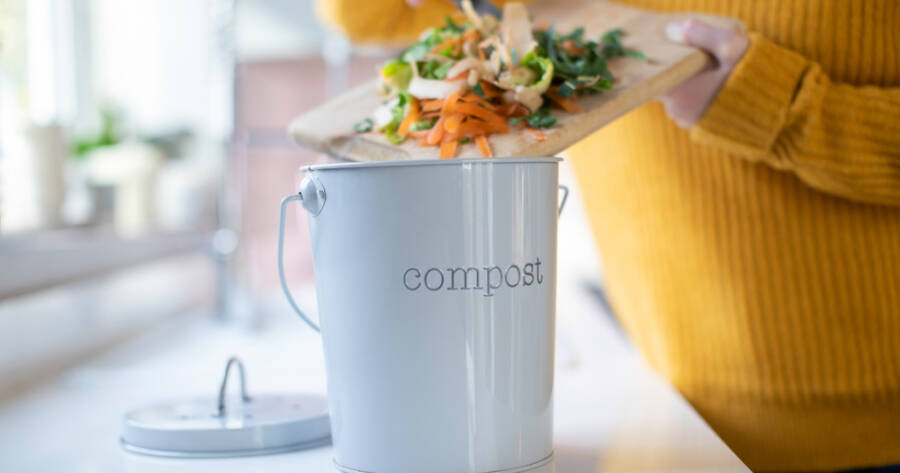Living in an apartment doesn’t mean you have to toss your food scraps into the trash. With a little creativity and the right setup, you can transform kitchen waste into nutrient-rich compost without needing a backyard. Composting indoors is easier than it sounds, and it’s a simple way to cut down on waste while supporting the environment from your own home.
Countertop Compost Bins for Small Spaces
Compact, odor-sealed compost bins are perfect for daily use in apartment kitchens. These bins collect food scraps like fruit peels, coffee grounds, and eggshells without creating a mess or attracting pests. Charcoal filters help control odor, and most are small enough to fit under the sink or on a counter without taking up much room.
They’re ideal for people who want to collect waste before transferring it to a larger composting solution. You can empty the bin into a drop-off site, community compost program, or an at-home system. Look for models with dishwasher-safe components to make cleanup simple. Even if you live in a studio apartment, this is an easy first step toward sustainable living.
Vermicomposting: Let Worms Do the Work
Vermicomposting uses red wiggler worms to break down organic matter into nutrient-rich castings. A small worm bin can fit inside a closet, under the sink, or on a balcony, and when maintained properly, it won’t smell. The worms eat kitchen scraps like vegetable peels, tea bags, and shredded paper, producing compost you can use for potted plants or give away.
Setting up a bin involves creating layers of bedding (like newspaper or coconut coir) and feeding the worms regularly. You’ll need to monitor moisture and temperature to keep the environment ideal for decomposition. Vermicomposting is a low-maintenance, natural process, and watching the worms work can even be oddly satisfying. It’s a fun, hands-on way to reduce waste indoors.
Bokashi Composting: A No-Mess Fermentation Option
Bokashi composting uses a fermentation process to break down all types of food waste—even meat, dairy, and cooked foods that traditional composting avoids. A Bokashi bucket contains a special bran inoculated with microbes that speed up fermentation. Once full, the bucket is sealed for two weeks while the contents break down.
This method produces a pre-compost material you can bury in a garden or add to a larger outdoor compost bin. For apartment dwellers, you may need to coordinate with a community garden or a local compost drop-off site. Bokashi composting is ideal for people who want a clean, smell-controlled method that processes a wide variety of waste without attracting pests.
Community Compost Programs and Drop-Off Sites
If composting at home feels like too much or if you don’t have room, many cities offer community composting programs. These programs often include drop-off locations at farmers markets, recycling centers, or co-ops. You simply collect your food scraps in a sealed container and bring them to a designated site each week.
This option allows apartment residents to contribute to waste reduction without needing to manage the composting process themselves. Some programs even return finished compost to participants for use in houseplants or garden beds. Check local listings or municipal websites to find a drop-off near you. Supporting community composting helps divert food waste from landfills while building greener cities.
Balcony Tumblers and Mini Outdoor Setups
If you have access to a small balcony or patio, compact compost tumblers can offer a more traditional approach. These enclosed units rotate easily, allowing you to aerate the compost for faster breakdown. Unlike open bins, tumblers keep out pests, contain odors, and don’t require much manual turning or shoveling.
Choose a model sized for small households and weather-resistant enough to handle rain or sun. Add kitchen waste along with dry materials like shredded paper or dried leaves to keep the mix balanced. While the process can take several weeks, it produces rich compost that can be used for container gardens or donated to local green spaces.
A Greener Routine Starts at Home
You don’t need a backyard to start making a difference—just a willingness to change how you handle waste. Whether you keep a countertop bin, host worms under your sink, or drop off scraps at a local center, composting from an apartment is more accessible than ever. The payoff is cleaner living, reduced landfill waste, and a direct connection to your environment. Start small, stay consistent, and enjoy the impact of your efforts.
